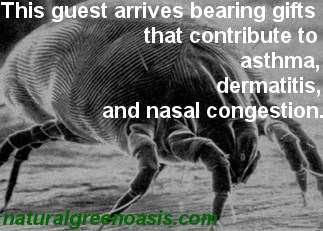What’s Lurking in Your House?
We’ve all found the occasional dust bunny lurking in infrequently visited places in our homes. Dust is ubiquitous and though it seems to be innocuous it can be quite hazardous to your health.
What Is Dust?
First, let’s look at what dust actually is.
Dust is made up of tiny particles from many sources including dead skin cells, textile fibers, dirt or soil, heavy metals from car exhaust, plant pollen, animal dander, mold spores and dust mites.
Dust Mites
Of these let’s look at dust mites. Dust mites are microscopic little creatures that eat dead skin cells. They thrive in dark, moist places like your mattress, pillows, and sheets.
After they’ve had a tasty meal, they excrete feces which include enzymes that negatively affect our health. These enzymes can cause allergies that lead to asthma, dermatitis, and nasal congestion just to name a few.
Dust mites particularly enjoy environments of high humidity and temperatures. They tend to die when humidity is generally below 50 percent and temperatures below 70.
Four Things You Can Do
There are ways to decrease the burgeoning population.
1. Dust regularly. However, since dusting can actually cause dust to become airborne, you might try using a slightly damp cloth to keep flying matter down.
2. Wash bedding regularly in hot water. Washing removes the allergens created by dust mites. The hot water kills the mites.
3. Keep the humidity and temperature levels low enough to discourage dust mite proliferation.
4. Switch to a wool pillow. Wool is naturally dust mite resistant.



